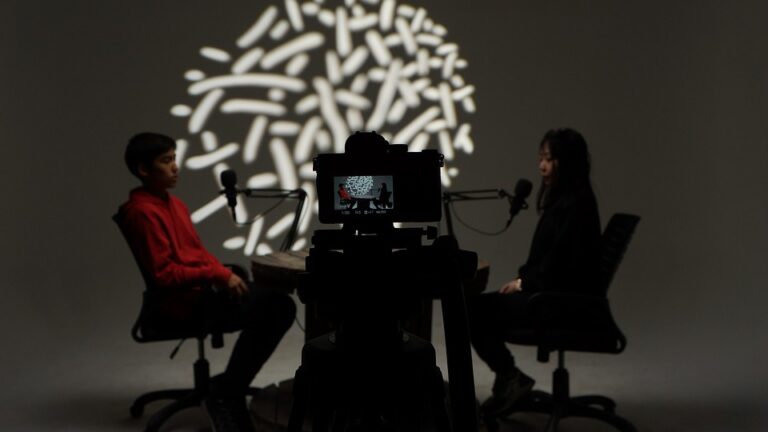The Evolution of Celebrity Interviews: Trends and Insights over the Decades
Celebrity interviews have undergone a remarkable transformation over the decades, evolving from simple promotional tools to complex, engaging narratives that reflect cultural shifts and technological advancements. Understanding this evolution is essential for anyone passionate about celebrity culture and media. In this article, we will explore how celebrity interviews have changed, identify current trends, and provide insights into the future of these fascinating exchanges.
The Early Days: Simple Conversations (1920s-1940s)
In the early to mid-20th century, celebrity interviews were typically straightforward, focusing primarily on film and music promotions. Journalists would ask basic questions about upcoming projects, often tethered to the glamorous lifestyles of stars like Marilyn Monroe and Frank Sinatra. These interactions primarily appeared in print media, with many interviews meriting only a couple of paragraphs.
The Rise of Television (1950s-1960s)
The advent of television revolutionized how audiences interacted with celebrities. Shows like "The Ed Sullivan Show" and "The Tonight Show" showcased interviews as performance. Celebrities were given airtime not only to promote their work but also to engage the audience in a more personal way. This era saw a gradual shift from promotional Q&As to more entertaining dialogues, inviting viewers to empathize with their idols.
The Transformative 1970s and 1980s: Deeper Connections
The 1970s and 1980s marked a significant turning point in celebrity interviews. News programs began to take a more journalistic approach, with icons like Barbara Walters leading the charge with her probing, often deeply personal interviews. Celebrities became willing to share vulnerabilities, creating a more humanized perspective that helped the public connect emotionally.
Current Statistics: Research indicates that, as of 2022, about 68% of viewers prefer interviews that delve into personal stories over straightforward promotional content, marking a stark contrast to earlier decades when the focus was solely on the work.
Pop Culture and the Rise of Tabloids
Simultaneously, the rise of tabloids in the late 20th century brought sensationalism to the forefront of celebrity interviews. Stories were often exaggerated, weaving in scandals and gossip. The interplay between public personas and private lives became a defining characteristic of how stars were presented in interviews.
Digital Evolution: The Social Media Age (2000s-Present)
The 2000s ushered in a new era vastly influenced by the internet and social media. Platforms like YouTube and Instagram not only changed how interviews were conducted but also allowed celebrities to bypass traditional media channels. Celebrity interviews transitioned from controlled, formatted versions to spontaneous, informal interactions shared across social media platforms.
Real-Time Engagement
Social media prompted the rise of real-time engagement. Q&A sessions on platforms like Twitter and Instagram have become commonplace, allowing fans unprecedented access to their favorite stars. This direct line of communication enables celebrities to craft their narratives and control how they are perceived, making celebrity interviews more about advocacy and personal expression than mere promotion.
Current Statistics: A 2023 survey revealed that 75% of millennials and 68% of Gen Z prefer celebrity interactions via social media platforms for authentic content over traditional interviews.
The Role of Influencers
Influencer culture has also added a new dimension to celebrity interviews. Collaborations between traditional celebrities and social media influencers are common, merging fan bases and capitalizing on each other’s reach. For instance, a prominent influencer interviewing a celebrity often feels more like a conversation between friends rather than a formal interview.
The Future of Celebrity Interviews: What Lies Ahead?
As we look ahead, the landscape of celebrity interviews appears ripe for further transformation. Virtual reality (VR) and augmented reality (AR) technology promises to create immersive interview experiences, allowing fans to feel as if they are part of the conversation. This technology could further break the boundaries between celebrity and fan, adding layers of intimacy to future interviews.
Additionally, the shift toward mental health awareness suggests we might see more celebrities engaging in candid discussions about their struggles, not just to foster connection, but also to break down stigmas surrounding health issues.
Potential Trends to Watch
- Increased Authenticity: Audiences crave genuine experiences, and this will likely continue to shape how celebrities present themselves.
- Focus on Responsibility: With public figures holding immense influence, expect interviews to feature more discussions on social issues, sustainability, and mental wellness.
Conclusion
The evolution of celebrity interviews reflects broader societal changes, from emotional engagement to the influence of technology. As these interactions continue to transform, staying attuned to trends will be crucial for fans, media professionals, and the celebrities themselves.
For a deeper dive into related topics, feel free to check out these articles on buzzo.live:
- The Impact of Social Media on Celebrity Culture
- The Role of Influence in Modern Celebrities
- The Future of Celebrity Branding
For further reading on the history and trends shaping celebrity interviews, visit Variety and The Hollywood Reporter.
Image Suggestions:
-
Image Caption: A celebrity engagement via social media
Alt Text: Celebrity Interviews on social media platforms.
- Image Caption: An influencer interviewing a celebrity
Alt Text: A modern celebrity interview featuring an influencer.
By weaving together past influences and modern realities, the evolution of celebrity interviews offers a captivating lens through which we can appreciate the dynamic relationship between stars and their fans.


